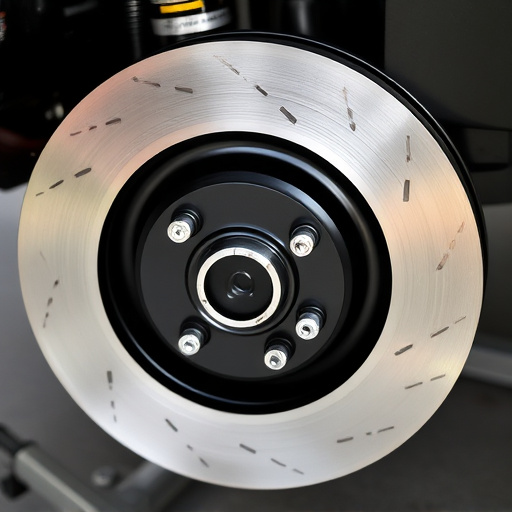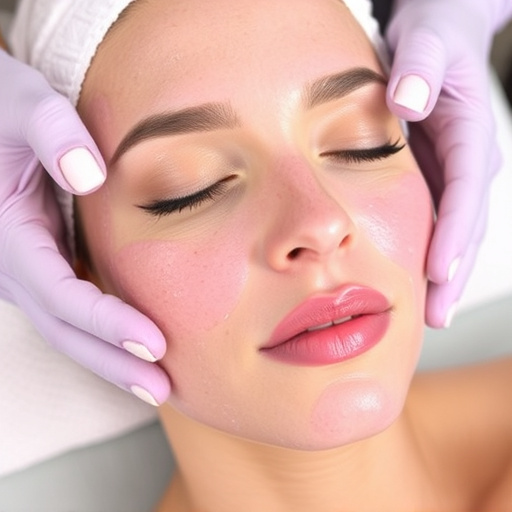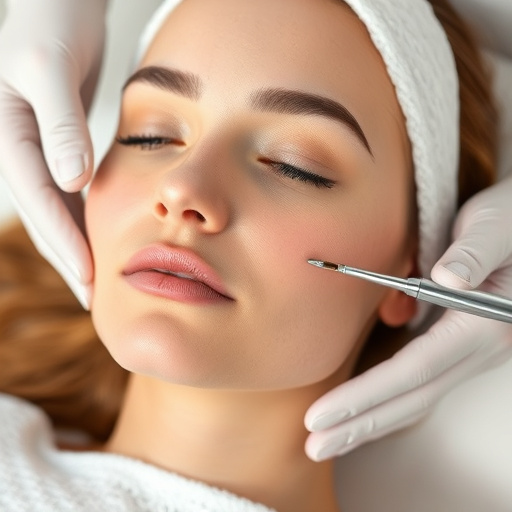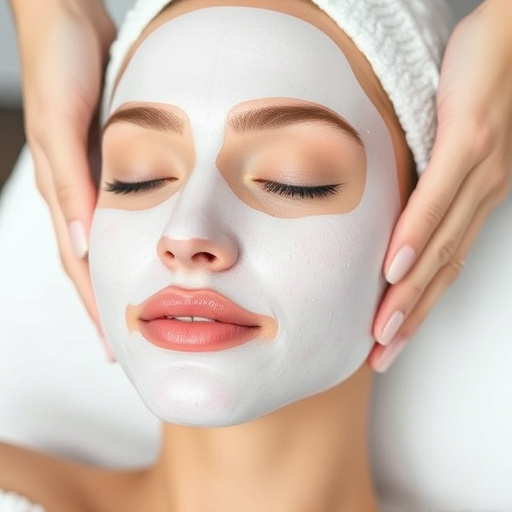Hyperpigmentation, caused by sun damage and various triggers, leads to discolored skin patches. Treatments range from topical exfoliants and retinoids to laser therapy and microdermabrasion. These methods aim to fade dark spots, stimulate collagen, and reveal clearer, radiant skin through targeted care.
Hyperpigmentation, marked by dark patches on the skin, can be a persistent concern. However, with the right approach, effective hyperpigmentation treatment options exist that deliver fast results. This article delves into the root causes and diverse types of hyperpigmentation, exploring powerful solutions from topical treatments like chemical exfoliants and retinoids to professional procedures such as laser therapy and microdermabrasion. Discover how these strategies can even out your skin tone and restore a radiant complexion.
- Understanding Hyperpigmentation: Causes and Types
- Topical Treatments: Chemical Exfoliants and Retinoids
- Professional Procedures: Laser Therapy and Microdermabrasion
Understanding Hyperpigmentation: Causes and Types

Hyperpigmentation is a common skin concern characterized by discolored patches that appear darker than surrounding skin. It can be caused by various factors, with the most prevalent being sun exposure. When the skin is damaged due to UV rays, melanin-producing cells, known as melanocytes, overproduce melanin, leading to areas of hyperpigmentation. This process is often accelerated by inflammation or injury to the skin.
There are several types of hyperpigmentation, including age spots, sunspots, post-inflammatory hyperpigmentation (PIH), and melasma. Age spots and sunspots are typically caused by prolonged sun exposure and are more common as individuals get older. PIH often develops after an acne breakout or other skin injuries, while melasma is hormonal in nature and frequently appears during pregnancy or due to hormonal birth control. Understanding the specific type of hyperpigmentation can help guide selection of effective hyperpigmentation treatment options, such as hydrating facials, customized facials targeting melanin production, or microneedling therapy designed to stimulate collagen renewal.
Topical Treatments: Chemical Exfoliants and Retinoids

Topical treatments are a popular choice for hyperpigmentation due to their accessibility and effectiveness. Chemical exfoliants, containing ingredients like glycolic or salicylic acid, gently remove dead skin cells and help fade dark spots. These acids increase skin cell turnover, allowing for a more even skin tone. Retinoids, a form of vitamin A derivatives, also stimulate collagen production and accelerate cell renewal, leading to reduced hyperpigmentation over time.
Non-surgical treatments like these offer a gentle yet powerful approach to aesthetic goals. While laser hair removal isn’t directly related to hyperpigmentation treatment, it’s worth noting that advanced laser technologies can target pigmentation issues as well, providing another option for those seeking specialized care.
Professional Procedures: Laser Therapy and Microdermabrasion

Professional Procedures: Laser Therapy and Microdermabrasion
When it comes to tackling hyperpigmentation, many turn to professional skincare treatments for effective results. Two popular and powerful methods are laser therapy and microdermabrasion. Laser therapy targets specific pigmented areas with concentrated light energy, carefully breaking down excess melanin without damaging the surrounding skin. This highly precise approach offers faster results compared to traditional methods, leaving skin visibly clearer and more even in just a few sessions.
Microdermabrasion, on the other hand, involves gently exfoliating the top layer of the skin using a special device that combines suction and abrasive materials. This procedure promotes cell turnover, reveals brighter, smoother skin, and helps to minimize the appearance of hyperpigmented spots. Combining these professional skincare treatments with a consistent skincare routine featuring hydrating facials and targeted serums can significantly accelerate progress towards achieving clear, radiant skin.
When it comes to effective hyperpigmentation treatment, there are diverse options available that can significantly improve skin tone. From topical treatments like chemical exfoliants and retinoids, to professional procedures such as laser therapy and microdermabrasion, each approach offers unique benefits tailored to different needs and severity levels. By understanding the causes and types of hyperpigmentation, you can make informed decisions on the fastest and most suitable hyperpigmentation treatment for your skin.














